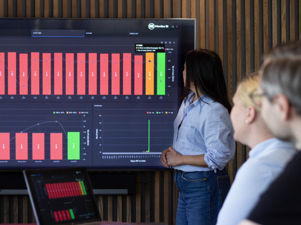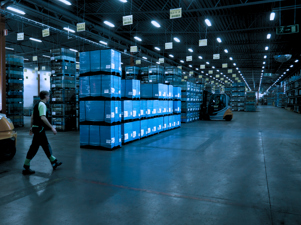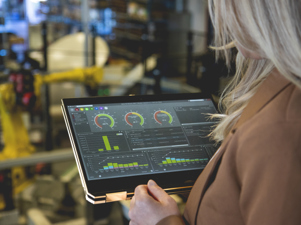Efficient Manufacturing Costs Management Insights
To remain competitive, manufacturers must keep a tight rein on costs – be it materials cost, labor cost, manufacturing overhead, or other indirect costs. Defining and managing manufacturing costs has never been a particularly easy task. Capturing these cost data throughout the entire manufacturing process, from the first piece of production incurred until the final costs are identified, requires high accuracy, consistency, and relatively predictable estimating cycles to compare estimated costs and actual costs to determine profit or loss.
Finance, engineering, production, purchasing, inventory, and supply chain intimately connect to budgeting and forecasting of bill of materials (BOM) costing, production costing for design, engineering, quoting, and purchasing of raw materials or parts. They must be able to determine the cost impacts quickly and accurately as engineering and production data such as BOMs, shop floor data, intersect in these ever-changing manufacturing environments: unit costs, make-to-order, engineer-to-order, repetitive order, individual job or batch, and inventory level.
Companies are at a wildly pace to get a bird’s eye view in managing and tracking their manufacturing costs and creating simulated cost models for evaluation and analysis without affecting current operations. However, not every company is able to measure their costs efficiently. The ones with the right tools that built into engineering, production, purchasing, and finance systems, allow better-defined budgeting and cost allocation for raw materials, labor and other associated costs. This also helps in making informed decisions such as managing cash flow and capital allocations because more solid estimates, cost data and potential future indicators are rolled out in transparency.
In this article, our Business Consultant, Peter Choo, joined us and shared his expertise and experience in helping Monitor customers to solve manufacturing cost management problems. This discussion couldn’t come at a better time, especially planning for uncertainty in a world of continual turbulence. He will discuss the importance of having a quality system that can improve cost management and communication significantly.
What problems are we helping our customers to solve in manufacturing cost management with Monitor?
From my experience as a consultant, I have noticed there are two main types of customers:
- Customers who manage their business traditionally without any ERP System. This group of customers does not have the proper tools to manage their business and relies on tools such as spreadsheets to record inventory, stock, and material costs. They find it extremely hard to manage all the different costs as their business starts to scale up. As such, implementing Monitor into their business will not only help them to scale up their business but also help them to manage their manufacturing costs more efficiently.
- Customers who are using an existing ERP system and decided to switch to Monitor. This group of customers may be using an ERP system that is not fully integrated or requires the purchase and implementation of additional modules to add on functionality such as linking the Finance module to the Manufacturing module.
This results in a higher overhead for them to have a complete and fully integrated system, also implementation and customization are costly both in terms of money and time.
What features in Monitor have benefited our customers the most that you have observed?
Monitor’s Pre-calculation and Post-calculation are the features that have helped customers the most in terms of managing manufacturing costs. With Monitor, you are able to set up different variants for Labour, Overhead and Miscellaneous costs.
You can set up a cost variant for the current quarter and the next quarter and create different simulation models. Monitor gives you the flexibility to mix and match different cost variants based on the most current market situation.
As an example, there are utility subsidies during the crisis period given by the government. This can be set as a Crisis variant of incurred manufacturing costs and Monitor will then be able to calculate the current manufacturing costs based on the latest economic landscape, giving manufacturers accurate costing data.
How has Monitor improved our customers' manufacturing costs?
Monitor makes costing information transparent with a high accuracy level to all related departments. This means that the data available to production workers is the same as what is available to finance personnel and planners as all of Monitor’s modules are linked.
The high transparency of the system increases integrity within the company and results in improved efficiency and accuracy in accounting functions.
One of our local customers, who is a manufacturer of electronic locks has observed reduced inventory value after implementing Monitor. This is because the system can provide them with accurate manufacturing data that allows them to eliminate excess stock. This indirectly saves manufacturers costs as excess inventory fluctuates in price over time and will inadvertently affect costs as well.
What made Monitor stand out from other options?
I would have to say the all-in-one concept of Monitor makes it stand out from other available ERP systems.
With Monitor, all modules are available in a single fully integrated package, there is no need for expensive add-ons or additional customizations and integrations that can be costly and time consuming to implement.
Any significant improvements that you have observed in our customers' pre and post-calculation accuracy?
Customers gain high cost efficiency, as they can know the cost before and after building a product. Pre-calculation data is easily accessible, allowing pricing estimates to be made before mass production even begins.
Production lines also gain transparency, allowing production managers to know which areas they need to ramp up or cut down on capacity based on post-calculation data provided by Monitor.
Labor cost, time incurred, material cost and other costing data are all at the fingertips of finance personnel. This essential data allows accurate pre-calculations and post-calculations to be made. Cost differences can easily be calculated as well since price variances are also captured in the system.
The result is highly improved accuracy in customers’ pre- and post-calculations that allows them to continuously optimize production flows and manage manufacturing costs efficiently.
Peter also highlighted the need to institutionalize new ways of working - the pandemic may be a trigger point for companies that have not explored ERP solutions to start doing so. Investing in the right ERP system enables companies to facilitate remote work, building a view of capital and capacity constraints remotely, particularly in times of crisis.
This will also help companies to look beyond the day-to-day operations, key areas and important costings – calculate costs, when to adjust prices for new or existing parts, and assist them to develop a view of how the future may uphold when they have better control over standardized data for production, accounting, inventory and the supply chain in general.






